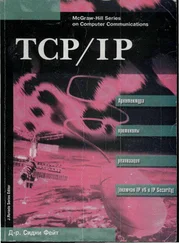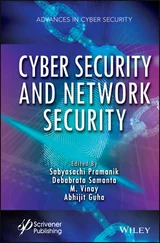Banks operate a lot of security-critical computer systems.
1 A bank's operations rest on a core bookkeeping system. This keeps customer account master files plus a number of journals that record incoming and outgoing transactions. The main threat here is the bank's own staff; about one percent of bank branch staff are fired each year, mostly for petty dishonesty (the average theft is only a few thousand dollars). The traditional defence comes from bookkeeping procedures that have evolved over centuries. For example, each debit against one account must be matched by a credit against another; so money can only be moved within a bank, never created or destroyed. In addition, large transfers typically need two people to authorize them. There are also alarms that look for unusual volumes or patterns of transactions, and staff are required to take regular vacations with no access to the bank's systems.
2 One public face is the bank's automatic teller machines. Authenticating transactions based on a customer's card and personal identification number – so as to defend against both outside and inside attack – is harder than it looks! There have been many epidemics of ‘phantom withdrawals’ in various countries when local villains (or bank staff) have found and exploited loopholes in the system. Automatic teller machines are also interesting as they were the first large-scale commercial use of cryptography, and they helped establish a number of crypto standards. The mechanisms developed for ATMs have been extended to point-of-sale terminals in shops, where card payments have largely displaced cash; and they've been adapted for other applications such as prepayment utility meters.
3 Another public face is the bank's website and mobile phone app. Most customers now do their routine business, such as bill payments and transfers between savings and checking accounts, online rather than at a branch. Bank websites have come under heavy attack since 2005 from phishing – where customers are invited to enter their passwords at bogus websites. The standard security mechanisms designed in the 1990s turned out to be less effective once criminals started attacking the customers rather than the bank, so many banks now send you a text message with an authentication code. The crooks' reaction is to go to a phone shop, pretend to be you, and buy a new phone that takes over your phone number. This arms race poses many fascinating security engineering problems mixing elements from authentication, usability, psychology, operations and economics.
4 Behind the scenes are high-value messaging systems, used to move large sums between banks; to trade in securities; to issue letters of credit and guarantees; and so on. An attack on such a system is the dream of the high-tech criminal – and we hear that the government of North Korea has stolen many millions by attacks on banks. The defence is a mixture of bookkeeping controls, access controls, and cryptography.
5 The bank's branches may seem large, solid and prosperous, reassuring customers that their money is safe. But the stone facade is theatre rather than reality. If you walk in with a gun, the tellers will give you all the cash you can see; and if you break in at night, you can cut into the safe in minutes with an abrasive wheel. The effective controls center on alarm systems, which are connected to a security company's control center, whose staff check things out by video and call the police if they have to. Cryptography is used to prevent a robber manipulating the communications and making the alarm appear to say ‘all's well’ when it isn't.
I'll look at these applications in later chapters. Banking computer security is important: until the early 2000s, banks were the main civilian market for many computer security products, so they had a huge influence on security standards.
1.4 Example 2 – a military base
Military systems were the other technology driver back in the 20th century, as they motivated much of the academic research that governments funded into computer security from the early 1980s onwards. As with banking, there's not one application but many.
1 Military communications drove the development of cryptography, going right back to ancient Egypt and Mesopotamia. But it is often not enough to just encipher messages: an enemy who sees traffic encrypted with somebody else's keys may simply locate and attack the transmitter. Low-probability-of-intercept (LPI) radio links are one answer; they use tricks that are now adopted in everyday communications such as Bluetooth.
2 Starting in the 1940s, governments spent a lot of money on electronic warfare systems. The arms race of trying to jam enemy radars while preventing the enemy from jamming yours has led to many sophisticated deception tricks, countermeasures, and counter-countermeasures – with a depth, subtlety and range of strategies that are still not found elsewhere. Spoofing and service-denial attacks were a reality there long before blackmailers started targeting the websites of bankers, bookmakers and gamers.
3 Military organisations need to hold some information close, such as intelligence sources and plans for future operations. These are typically labeled ‘Top Secret’ and handled on separate systems; they may be further restricted in compartments, so that the most sensitive information is known to only a handful of people. For years, attempts were made to enforce information flow rules, so you could copy a file from a Secret stores system to a Top Secret command system, but not vice versa. Managing multiple systems with information flow restrictions is a hard problem, and the billions that were spent on attempting to automate military security helped develop the access-control technology you now have in your mobile phone and laptop.
4 The problems of protecting nuclear weapons led to the invention of a lot of cool security technology, ranging from provably-secure authentication systems, through optical-fibre alarm sensors, to methods of identifying people using biometrics – including the iris patterns now used to identify all citizens of India.
The security engineer can still learn a lot from this. For example, the military was until recently one of the few customers for software systems that had to be maintained for decades. Now that software and Internet connectivity are finding their way into safety-critical consumer goods such as cars, software sustainability is becoming a much wider concern. In 2019, the European Union passed a law demanding that if you sell goods with digital components, you must maintain those components for two years, or for longer if that's a reasonable expectation of the customer – which will mean ten years for cars and white goods. If you're writing software for a car or fridge that will be on sale for seven years, you'll have to maintain it for almost twenty years. What tools should you use?
1.5 Example 3 – a hospital
From bankers and soldiers we move on to healthcare. Hospitals have a number of interesting protection requirements – mostly to do with patient safety and privacy.
1 Safety usability is important for medical equipment, and is by no means a solved problem. Safety usability failures are estimated to kill about as many people as road traffic accidents – a few tens of thousands a year in the USA, for example, and a few thousand in the UK. The biggest single problem is with the infusion pumps used to drip-feed patients with drugs; a typical hospital might have half-a-dozen makes, all with somewhat different controls, making fatal errors more likely. Safety usability interacts with security: unsafe devices that are also found to be hackable are much more likely to have product recalls ordered as regulators know that the public's appetite for risk is lower when hostile action becomes a possibility. So as more and more medical devices acquire not just software but radio communications, security sensitivities may lead to better safety.
Читать дальше











